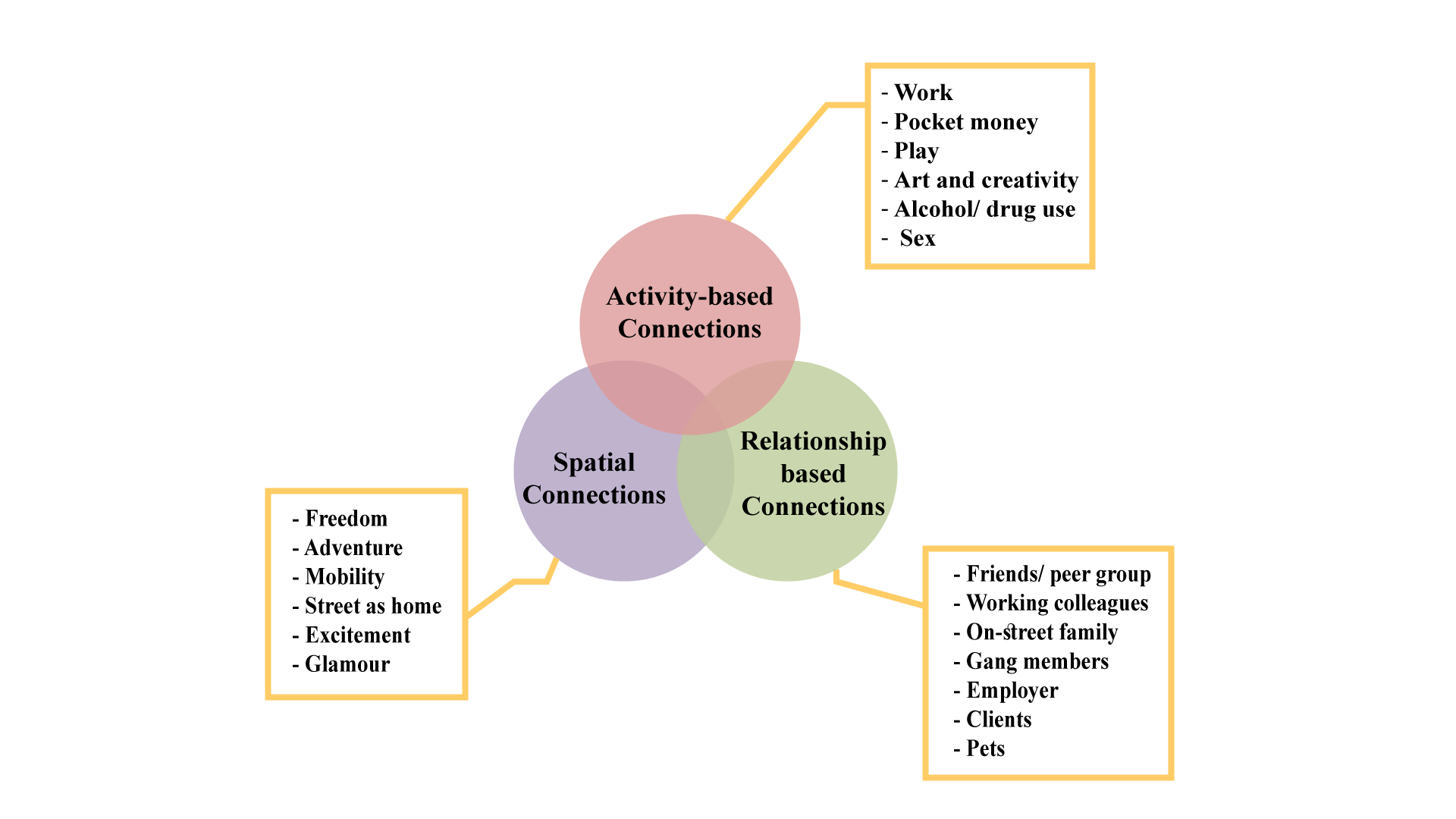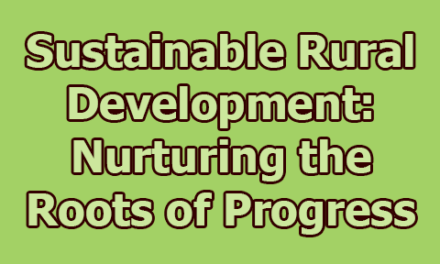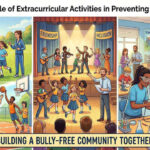An Overview of Street Children:
Street children, also known as street kids, are minors who live and/or work on the streets, often without any adult supervision or care. They may have run away from home or been abandoned by their families, and are left to fend for themselves in public spaces such as parks, markets, or train stations. They often resort to begging, scavenging, stealing, or working in informal jobs such as selling goods or providing services to survive. Street children are exposed to numerous risks, including violence, abuse, exploitation, malnutrition, and health problems. In the rest of this article, we will present you with an overview of street children: including definitions, types, typology connectivity, attributes, gender distribution, factors, activities, risks, solutions, and interventions.
Definitions of Street Children:
Some of the necessary definitions of street children are given below:
The UNICEF defines street children as “any boy or girl who has not reached adulthood, for whom the street (including unoccupied dwellings and wasteland) has become his or her habitual abode and/or source of livelihood; and also who is inadequately protected, supervised, or directed by responsible adults”.
The ISPCAN defines street children as “children who live or work in the streets and who are not adequately protected by their families or the state”.
Save the Children defines street children as “children who spend most of their time on the streets, whether alone or with others, with or without their families, and who do not have adequate adult care”.
WHO defines street children as “children for whom the street (including unoccupied dwellings, wasteland, and public parks) has become a source of livelihood, and who are inadequately protected and supervised”.
According to the ILO, street children are “children who spend a significant amount of time on the streets, often working or begging, and who are vulnerable to exploitation, abuse, and violence”.
From the above definitions, we can say that Street children are children under the age of 18 who spend most of their time on the streets, either alone or with others, with or without their families, and for whom the street (including unoccupied dwellings, wasteland, and public parks) has become a source of livelihood. They are not adequately protected or cared for by their families or other responsible adults and are denied access to education, healthcare, and other basic services. They are exposed to multiple risks, including violence, exploitation, and abuse, and are at high risk of developing psychological problems. Street children require specialized interventions and care to help them cope with their traumatic experiences and rebuild their sense of self and well-being. As a global community, we must work together to ensure that street children are protected, cared for, and given the opportunities they need to thrive.
Types of Street Children:
Street children are a complex and diverse group, encompassing a range of experiences and circumstances. While each child’s situation is unique, there are several broad categories that street children can be grouped into based on their living and working situations, as well as their family backgrounds. Here, we will explore three main types of street children: street-living children, street-working children, and children of street families.
- Street-Living Children: Street-living children are those who have no permanent home or family to live with and spend most of their time on the streets. They may be orphaned or abandoned, or they may have run away from home due to abuse, neglect, or poverty. Street-living children often lack access to basic needs such as food, shelter, and healthcare and are at high risk of exploitation, abuse, and violence.
These children are highly vulnerable and often lack adult supervision or support. They may form groups with other street-living children for protection and to meet their basic needs. Street-living children often develop their own coping mechanisms and survival strategies, such as begging, scavenging, or selling small items on the streets.
- Street-Working Children: Street-working children are those who work on the streets to support themselves or their families. They may work as vendors, porters, shoeshiners, or in other informal jobs. Street-working children often come from impoverished families and may be the primary breadwinners. They may work long hours in hazardous conditions and are often paid very low wages.
Street-working children are also vulnerable to exploitation and abuse by employers and customers. They may be forced to work in unsafe conditions, denied access to education and healthcare, or subjected to physical and verbal abuse. Despite the challenges they face, many street-working children are resilient and resourceful, using their earnings to support themselves and their families.
- Children of Street Families: Children of street families are those who live with their families on the streets. Street families may include parents with young children, single mothers, or other types of family units. These families may have become homeless due to poverty, natural disasters, or other crises. They may lack access to basic services and may face discrimination and stigma from the wider community.
Children of street families often face multiple challenges, including poor health and nutrition, limited access to education and social services, and exposure to violence and exploitation. They may also experience social isolation and discrimination, which can further exacerbate their difficulties. Despite these challenges, many children of street families demonstrate resilience and adaptability, forming close bonds with their families and building supportive relationships within their communities.
Typology of Children’s Street Connectivity:
Street connectivity refers to the ways in which children engage with and relate to their environment, both physically and socially, while spending time on the streets. There are various types of street connectivity that street children may experience, including activity-based connections, spatial connections, and relationship-based connections.
- Activity-based Connections: Activity-based connections refer to the ways in which children engage in specific activities on the streets. These may include work, play, art and creativity, drug and alcohol use, and sex. Many street children engage in work as a means of survival, while others may engage in small-scale business ventures to earn pocket money. Play and art provide a source of enjoyment and creativity, while drug and alcohol use and sex may serve as coping mechanisms or sources of pleasure. However, these activities can also have negative consequences, including exposure to violence, exploitation, and health risks. It is essential that street children have access to education and social services that can help them make informed decisions and avoid harm.
- Spatial Connections: Spatial connections refer to the ways in which children use and perceive the physical space of the streets. These may include freedom, adventure, mobility, street as home, excitement, and glamour. Many street children value the freedom and autonomy that comes with being on the streets, as well as the sense of adventure and excitement that comes with exploring new places. However, street children may also experience social isolation and stigmatization from the wider community, leading them to view the streets as their only safe space. This can lead to a sense of attachment to the streets as their home, as well as a romanticized view of street life that emphasizes its excitement and glamour. It is essential that street children have access to safe and secure housing options and social support networks that can help them transition off the streets if they choose to do so.
- Relationship-based Connections: Relationship-based connections refer to the ways in which street children engage with other people while on the streets. These may include friends and peer groups, working colleagues, on-street family members, gang members, employers, clients, and pets. Many street children form close relationships with their peers and colleagues, as well as with on-street family members who may act as surrogate parents. However, street children may also become involved in gangs or other groups that engage in criminal activity or exploitation. Employers and clients may also take advantage of street children by subjecting them to long hours and low pay, as well as physical and verbal abuse. It is essential that street children have access to education and training that can help them develop skills and form positive relationships, as well as legal protections that can help prevent exploitation and abuse.
Attributes of Street Children:
Street children are a vulnerable population, who live and work on the streets and are often deprived of basic necessities and protections. Here, we will explore the attributes of street children, including their place of residence, working and living conditions, time spent on the streets, protection, supervision and direction, family relationships, and vulnerability.
- Place of Residence: Street children are typically characterized by their lack of a stable place of residence. They may sleep on the streets, in abandoned buildings, or in other makeshift shelters. These children may lack access to basic amenities like clean water, sanitation facilities, and healthcare.
- A Set of Working Conditions: Street children often engage in work to support themselves. These working conditions may be characterized by exploitation, low wages, and hazardous conditions. Street children may engage in activities such as begging, selling goods on the street, or working in the informal sector.
- A Set of Living Conditions: Street children often lack access to basic living conditions, such as nutritious food, clean water, and adequate shelter. They may face exposure to extreme temperatures, harsh weather conditions, and limited access to medical care.
- Time Spent in the Streets: Street children spend a significant amount of their time on the streets, engaging in work or other activities. This exposure to the streets can result in exposure to various forms of risk, including crime, substance abuse, and exploitation.
- Protection, Supervision, and Direction: Street children are often unprotected and lack supervision and direction. They may be exposed to risks such as sexual exploitation, physical and emotional abuse, and neglect. Without access to adequate support and guidance, street children may struggle to make informed decisions and navigate the challenges of their environment.
- Family Relationships: Street children may come from families experiencing poverty, domestic violence, or other challenging circumstances. They may have strained relationships with their families and may have left home due to abusive or neglectful conditions. However, some street children may maintain close relationships with their families and return home periodically.
- Vulnerability: Street children are a vulnerable population, exposed to a wide range of risks, including violence, exploitation, and health hazards. They may lack access to education, healthcare, and other basic necessities, which can impact their long-term well-being and development.
Gender Distribution of the Street Children:
Street children are a heterogeneous group that includes both boys and girls. However, studies have shown that there is a gender disparity among street children, with boys being overrepresented compared to girls.
According to the United Nations Children’s Fund (UNICEF), approximately 75% of street children worldwide are boys. This gender disparity is particularly pronounced in African countries such as Nigeria, where up to 90% of street children are boys.
There are several factors that contribute to this gender disparity among street children. Boys may be more likely to engage in street activities such as begging, scavenging, and petty crime, which can provide them with income and food. Girls, on the other hand, maybe more vulnerable to sexual exploitation and trafficking, which can result in their exclusion from street life.
Additionally, gender roles and cultural norms may impact the likelihood of girls becoming street children. In some cultures, girls may be expected to stay home and help with domestic duties, while boys may be encouraged to explore the world outside.
It is important to note that while boys are overrepresented among street children, girls are still a significant and vulnerable population. Girls may face unique risks such as sexual exploitation, early marriage, and lack of access to education and healthcare.
Efforts to address the issue of street children must take into account the gendered nature of this population and work towards addressing the specific needs and challenges faced by both boys and girls. By doing so, we can work towards creating a more equitable and just society for all children.
Contributing Factors to the Existence of Street Children:
The existence of street children is a complex issue that is influenced by a variety of factors. Some of the major contributing factors are socio-economic and psychological in nature.
A. Socio-Economic Causes: some of the socio-economic causes are given below with a brief explanation.
- Poverty/Parents are too poor: Poverty is one of the main drivers of child homelessness and street children. Poor families may be unable to provide their children with basic necessities such as food, shelter, and clothing. In some cases, parents may send their children to the streets to beg or work in order to contribute to the family income.
- School Dropout: Children who drop out of school may become vulnerable to street life. Lack of education can limit their opportunities for employment and make them more likely to engage in street activities.
- War Displaced Children: Children who are displaced by war or conflict may become separated from their families and forced to fend for themselves. The trauma and upheaval of displacement can also contribute to mental health issues that make it difficult for them to reintegrate into society.
- Urbanization: Rapid urbanization can lead to overcrowding and lack of affordable housing, making it difficult for families to maintain a stable home environment. As a result, children may end up on the streets.
- Industrialization: Industrialization can lead to the displacement of rural communities and the migration of families to urban centers in search of work. Children who accompany their families may end up on the streets if their parents are unable to provide for them.
B. Psychological Causes: Factors operating outside the family do not explain the total situation because some children are on the streets even when shelter at home is physically available. They choose to go out of the house for reasons that are psychological in nature.
- Neglect Child: Children who are neglected by their parents or caregivers may seek comfort and security on the streets. Neglect can also contribute to mental health issues that make it difficult for children to thrive in a stable home environment.
- Poor Parenting: Children who experience inconsistent or abusive parenting may also be more likely to end up on the streets. Parents who struggle with addiction or mental health issues may be unable to provide a safe and stable home environment for their children.
Street Children Activities:
Street children may engage in a variety of activities, some of which include:
- Begging for money or food.
- Selling goods on the streets, such as snacks, trinkets, or other small items.
- Scavenging for food or materials to sell, such as scrap metal or plastic bottles.
- Engaging in informal or illegal labor, such as working in construction or agriculture.
- Participating in street performances, such as singing, dancing, or playing instruments.
- Engaging in substance abuse, such as using drugs or alcohol.
- Gambling or other forms of risk-taking behavior.
- Being involved in gangs or other criminal activity.
- Engaging in sex work or other forms of exploitation.
- Playing street sports or games, such as football or basketball.
Impact of Street Children:
The impact of street children on society and the children themselves is multifaceted and complex. Here are some key areas where the impact of street children is felt:
- Health and safety: Street children are exposed to a range of health and safety risks, including malnutrition, exposure to extreme weather conditions, disease, violence, and abuse. They may lack access to basic healthcare and sanitation facilities and may be forced to engage in risky behaviors, such as drug use or unprotected sex.
- Education: Street children often lack access to formal education, which can have long-term consequences for their future prospects. Without a basic education, they may be unable to secure decent jobs or access higher education. This can perpetuate the cycle of poverty and make it difficult for them to escape street life.
- Social development: Street children may struggle to form healthy relationships with others, including family members and peers. They may be stigmatized by society and face discrimination and harassment, which can lead to further social isolation and exclusion.
- Economic impact: Street children may be seen as a burden on society, as they may rely on public resources such as healthcare and social services. However, they may also contribute to the informal economy through activities such as begging or selling goods on the street.
- Psychological impact: The trauma and stress of living on the streets can have long-term psychological effects on children, including anxiety, depression, and post-traumatic stress disorder. Without appropriate support and intervention, these effects can persist into adulthood and affect the child’s ability to lead a fulfilling life.
- Criminalization: Street children are often criminalized and punished for activities such as begging or loitering. This can lead to a cycle of incarceration and exclusion from society, further limiting their opportunities for social and economic development.
- Human rights: Street children are often denied their basic human rights, including the right to education, healthcare, and a safe and stable home environment. This violates international human rights standards and perpetuates a cycle of poverty and marginalization.
Children Affected by Various Category of Risks:
Children all over the world are affected by a variety of risks that can have a significant impact on their lives. These risks can be classified into different categories, including natural, health, life cycle, social, economic, political, and environmental.
- Natural Risks: Natural disasters such as heavy rainfall, landslides, volcanic eruptions, earthquakes, floods, hurricanes, droughts, and strong winds can have a devastating impact on children. These disasters can destroy homes, schools, and other essential infrastructure, leaving children homeless and without access to basic necessities like food, water, and medical care. In addition, natural disasters can cause physical injuries and psychological trauma, which can have long-lasting effects on children’s mental and physical health.
- Health Risks: Children are also at risk of various health-related issues, including illness, injury, accidents, disability, and epidemics such as malaria and HIV/AIDS. In addition, famines and food shortages can result in malnutrition and starvation, which can have long-term consequences for children’s physical and mental development.
- Life Cycle Risks: Children face unique risks at different stages of their lives. For example, during birth and maternity, both mothers and infants are vulnerable to a range of health risks. Orphanhood, family breakups, and old age can also pose significant risks to children, affecting their emotional and social well-being.
- Social Risks: Social risks include crimes such as domestic violence, terrorism, gangs, war, and social upheaval. Children who are exposed to these risks are often traumatized and may experience a range of psychological and emotional issues, such as anxiety, depression, and post-traumatic stress disorder (PTSD).
- Economic Risks: Economic risks such as unemployment, harvest failure, business failure, resettlement, output collapse, balance-of-payment shock, financial crisis, and currency crisis can affect children in a variety of ways. These risks can lead to poverty, which can have a range of negative effects on children’s health, education, and social development.
- Political Risks: Discrimination, riots, political unrest, and conflicts can all pose significant risks to children’s safety and well-being. Children may be displaced from their homes, separated from their families, or exposed to violence and other traumatic events.
- Environmental Risks: Environmental risks, such as pollution, deforestation, land degradation, and nuclear disasters, can have a significant impact on children’s health and well-being. For example, exposure to environmental toxins can lead to respiratory problems, developmental delays, and other health issues.
Solutions and Interventions:
The issue of street children is complex and requires a multifaceted approach. Solutions and interventions must address the underlying causes of street children, provide support and resources to help them escape the streets, and prevent others from becoming street children in the future. The following are some of the solutions and interventions that can be implemented:
- Addressing socio-economic causes: Poverty is one of the primary causes of street children. To address this, interventions such as cash transfers, food assistance, and employment programs can be implemented to support families and prevent children from ending up on the streets. Efforts can also be made to improve access to education and healthcare, which can help families improve their economic situation.
- Strengthening child protection systems: Governments can establish and strengthen child protection systems to ensure that children are not left without care and protection. This includes providing alternative care options such as foster care and adoption and establishing child helplines and child-friendly spaces where children can receive support and access to services.
- Providing education and vocational training: Education and vocational training are essential for helping street children escape the streets and break the cycle of poverty. Efforts can be made to provide street children with access to education, including alternative education options such as non-formal education, and vocational training programs that equip them with the skills they need to find employment.
- Providing healthcare services: Street children are often vulnerable to health issues such as malnutrition, infectious diseases, and mental health problems. Access to healthcare services, including mental health support, can help address these issues and improve the overall well-being of street children.
- Addressing child labor and exploitation: Many street children engage in work to survive, often in hazardous and exploitative conditions. Efforts can be made to eliminate child labor and protect children from exploitation. This includes enforcing laws that prohibit child labor and providing support to families to prevent children from being forced to work.
- Raising awareness and changing attitudes: Efforts can be made to raise awareness and change attitudes towards street children. This includes dispelling myths and stereotypes about street children and promoting a positive image of street children as resilient and capable individuals.
- Collaborative efforts: Addressing the issue of street children requires a collaborative effort between governments, civil society organizations, and the private sector. Partnerships can be formed to coordinate interventions and resources and to ensure that interventions are sustainable and have a long-lasting impact.
- Empowering street children: Street children should be empowered to take control of their lives and make decisions about their future. This includes involving street children in the design and implementation of interventions and providing them with opportunities to participate in community activities and decision-making processes.
From the above discussion, we can say that it is essential to recognize the rights and needs of street children and work towards creating a safe and supportive environment that provides them with access to education, health care, and opportunities to reach their full potential. By doing so, we can create a more inclusive and equitable society that values the well-being of all its members.
References:
- (2006). The State of the World’s Children 2006: Excluded and Invisible. United Nations Children’s Fund.
- Save the Children. (2017). Stolen Childhoods: End of Childhood Report 2017. Save the Children.
- Human Rights Watch. (2016). “You Have No Right to Complain”: Education, Social Restrictions, and Justice in Taliban-Held Afghanistan. Human Rights Watch.
- International Labour Organization. (2017). Global Estimates of Child Labour: Results and Trends, 2012-2016. International Labour Organization.
- Ennew, J. (2003). Street Children: A Guide to Effective Ministry. Authentic Publishing.
- Boyden, J., & Ennew, J. (Eds.). (1997). Children in Focus: A Manual for Participatory Research with Children. UNICEF.
- Crivello, G., & Smith, M. (Eds.). (2014). Children and Young People Living on the Streets: A Review of Ethnographic Research. UNICEF.
- Schratz, M., & Ennew, J. (Eds.). (1999). The Routledge Reader in Gender and Development. Routledge.
- Ratcliffe, R. (2011). Working with Street Children: Selected Case-Studies from Africa, Asia, and Latin America. Cambridge Scholars Publishing.
- Lansdown, G. (2010). The Realization of Children’s Participation Rights. UNICEF.
- Panter-Brick, C., & Smith, M. (Eds.). (2000). Abandoned Children. Cambridge University Press.
- Save the Children. (2008). Ending the Invisible Oppression: A Study on Child Begging in Bangladesh. Save the Children.
- International Labour Organization. (2017). Children in hazardous work: What we know, what we need to do. International Labour Organization.
- United Nations. (2012). Report of the United Nations Secretary-General’s Study on Violence against Children. United Nations.
- Biggeri, M., Ferrannini, A., & Mauro, V. (Eds.). (2010). Children and the Capability Approach. Palgrave Macmillan.
- McAlpine, K. (2011). The problem of street children in urban areas: A challenge for social work. Social Work and Society, 9(1).

Library Lecturer at Nurul Amin Degree College










